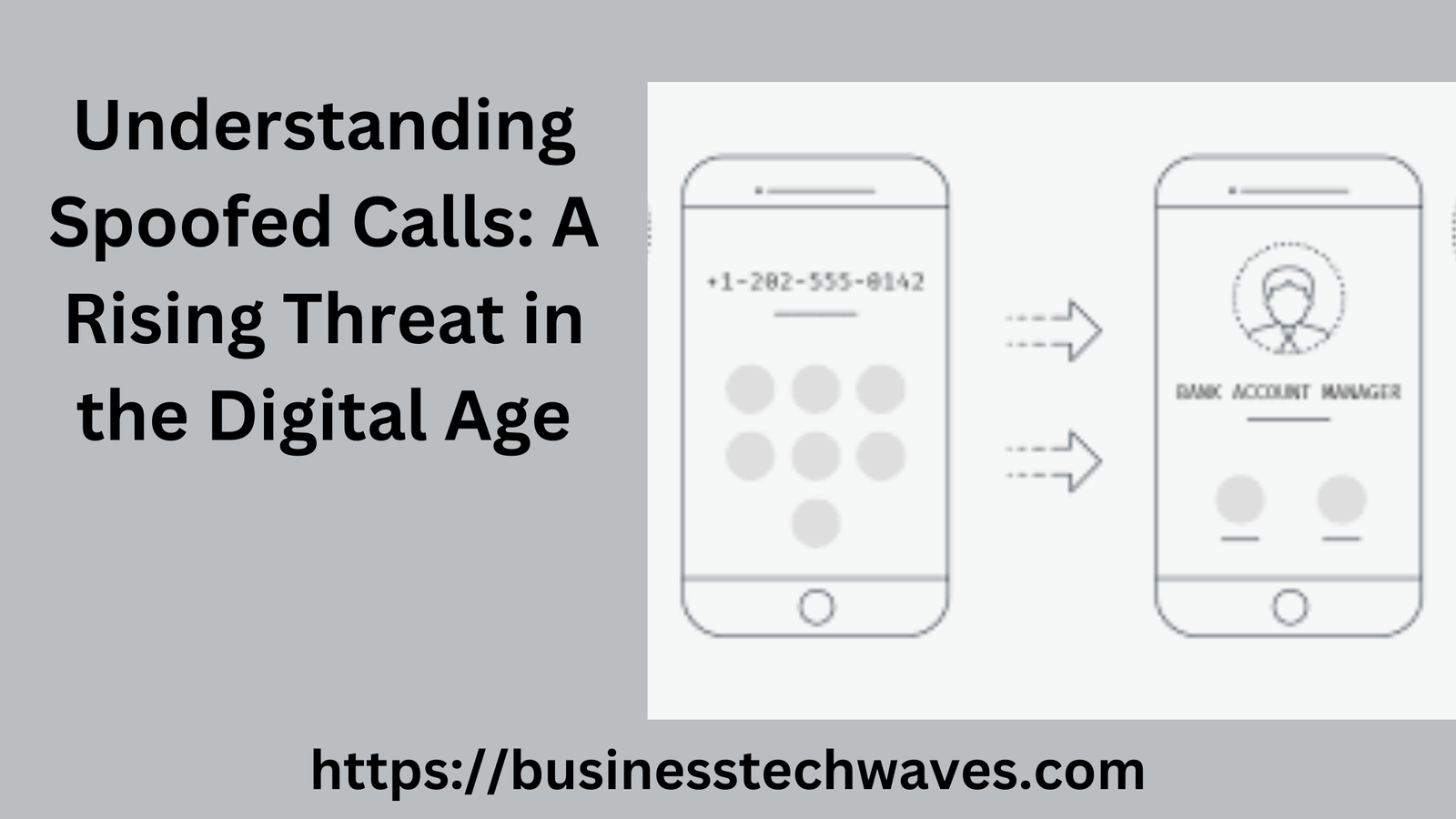
Best Understanding Spoofed Calls: A Rising Threat in the Digital Age 2024
Introduction
In today’s interconnected world, telecommunication has evolved in leaps and bounds. With the ease of making phone calls across the globe in seconds, the way people communicate has become more seamless than ever. However, as technology advances, so do the methods of exploitation. One such exploit is the rise of spoofed calls. Spoofed calls are fraudulent phone calls where the caller’s identity is deliberately disguised to appear as someone else, often to deceive the recipient. In recent years, these types of calls have become an increasing threat to individuals and organizations alike.
This article dives deep into the concept of spoofed calls, how they work, their purposes, the dangers they pose, and ways to protect against them.
What are Spoofed Calls?
Spoofed calls occur when a caller deliberately falsifies the information transmitted to your caller ID display. The goal is to make it appear as if the call is coming from a trusted or legitimate source when it is, in fact, from a scammer or fraudster. Spoofing technology allows anyone with the right tools to alter the displayed number, sometimes making it look like the call is from a local number, a well-known business, or even a government agency.
For example, a person might receive a call that appears to be from their bank, but it is actually from a cybercriminal attempting to steal personal information. In other cases, a scammer might spoof a local number to increase the chances of the recipient answering the call, as people are generally more inclined to respond to familiar or nearby numbers.
How Do Spoofed Calls Work?
At its core, call spoofing exploits weaknesses in the telecommunications infrastructure, particularly in the way caller ID information is transmitted over networks. When a call is made, the caller’s number is sent to the recipient’s network. With spoofing software or services, malicious actors can intercept and manipulate this data before it reaches the recipient.
There are a variety of tools and services online that enable call spoofing. These tools allow users to choose the number that will appear on the recipient’s caller ID. Some services even offer additional features, such as voice changing, to further enhance the deception.
Spoofing generally occurs through Voice over Internet Protocol (VoIP) services, where the internet is used to make phone calls rather than traditional phone lines. VoIP systems are more susceptible to manipulation since they allow greater flexibility in terms of the data that can be altered during the transmission process.
Types of Spoofed Calls
There are several types of spoofed calls, each with a specific goal:
1. Phishing and Fraudulent Calls
These calls aim to trick recipients into revealing sensitive personal information, such as social security numbers, bank account details, or credit card information. The caller might pose as a representative from a financial institution, tech support, or a government agency, claiming there is an issue with the recipient’s account or threatening legal action if certain details are not provided immediately.
2. Robocalls
Many spoofed calls are automated messages, or robocalls, where a pre-recorded message is played once the recipient picks up. These messages often contain misleading information, such as claims of winning a prize, offers for insurance or loans, or warnings about unpaid taxes. Robocalls may also spoof numbers to increase the chances of a recipient answering.
3. Telemarketing Scams
Scammers often spoof numbers to imitate legitimate businesses, calling with fraudulent offers or trying to sell fake products or services. By pretending to be a trusted company, scammers aim to build credibility and coax the recipient into making a purchase or providing financial information.
4. Neighbor Spoofing
This technique involves spoofing a number that closely resembles the recipient’s own phone number. The idea is to make the call appear as though it’s coming from a neighbor or someone in the same community, thereby increasing the likelihood of the recipient answering.
The Impact of Spoofed Calls
Spoofed calls are more than just a nuisance; they can have significant consequences for individuals, businesses, and governments.
1. Financial Losses
One of the most severe outcomes of spoofed calls is the financial loss experienced by victims. Scammers use these calls to steal personal information or trick victims into making payments. According to the Federal Trade Commission (FTC), consumers in the United States lose hundreds of millions of dollars annually to phone-based fraud. These scams can drain savings accounts, ruin credit scores, and create long-lasting financial hardships for victims.
2. Identity Theft
Many spoofed calls are designed to collect personal information that can be used to steal identities. Once a scammer obtains details such as social security numbers or bank account information, they can open credit accounts, take out loans, or commit other fraudulent activities in the victim’s name.
3. Erosion of Trust
As spoofed calls become more common, people are less likely to answer calls from unfamiliar numbers, even when they are legitimate. This erosion of trust can affect businesses, healthcare providers, and even personal relationships. For instance, someone may ignore an important call from their bank or healthcare provider because they fear it’s a scam.
4. Increased Stress and Anxiety
Receiving constant calls from spoofed numbers can lead to stress and anxiety, especially for those who feel powerless to stop them. Many victims report feeling harassed or overwhelmed by the sheer volume of scam calls they receive, which can sometimes number in the dozens each day.
Legal and Regulatory Response
Governments and regulators worldwide are taking steps to combat the rise of spoofed calls. In the United States, the Federal Communications Commission (FCC) has implemented several measures to address the problem, including:
1. STIR/SHAKEN Protocols
STIR (Secure Telephony Identity Revisited) and SHAKEN (Signature-based Handling of Asserted Information Using Tokens) are protocols designed to authenticate the origin of phone calls. When fully implemented, these technologies ensure that the number displayed on a caller ID is accurate and has not been spoofed.
2. Do Not Call Registries
Many countries offer Do Not Call registries that allow individuals to opt-out of receiving telemarketing calls. While these registries can help reduce legitimate telemarketing calls, they are less effective against scammers who do not follow regulations.
3. Fines and Penalties
Regulators have started to impose hefty fines on companies and individuals found guilty of making spoofed calls. In some cases, these penalties amount to millions of dollars, sending a clear message that illegal robocalls and spoofing will not be tolerated.
4. Call-Blocking Technology
The FCC and other regulatory bodies are also encouraging phone companies to implement call-blocking technology that can automatically detect and block suspicious calls before they reach consumers. Many major phone carriers now offer services that identify and block spoofed numbers or alert users to potential spam calls.
Protecting Yourself from Spoofed Calls
While governments and regulators are taking action, individuals can also take steps to protect themselves from spoofed calls:
1. Don’t Answer Unknown Numbers
One of the simplest ways to avoid falling victim to a spoofed call is to avoid answering calls from numbers you don’t recognize. If the call is important, the caller will likely leave a voicemail or follow up via other means.
2. Use Call-Blocking Apps
Several apps and services are available that can help block or filter unwanted calls. These apps use databases of known spam numbers to detect and block potential spoofed calls before they reach you.
3. Verify the Caller’s Identity
If you receive a suspicious call from someone claiming to represent a company or government agency, hang up and call back using the official contact number listed on the organization’s website. Never provide personal information to an unsolicited caller without first verifying their identity.
4. Report Spoofed Calls
If you receive a spoofed call, report it to the appropriate authorities. In the United States, the FTC and FCC both have websites where consumers can file complaints about unwanted or suspicious calls.
Conclusion
Spoofed calls represent a growing threat in the digital age, with scammers becoming more sophisticated in their tactics. While governments and regulators are working to combat the issue, it is essential for individuals to remain vigilant and take steps to protect themselves. By understanding how spoofed calls work, recognizing the risks, and employing protective measures, individuals can reduce their chances of falling victim to these fraudulent schemes.


